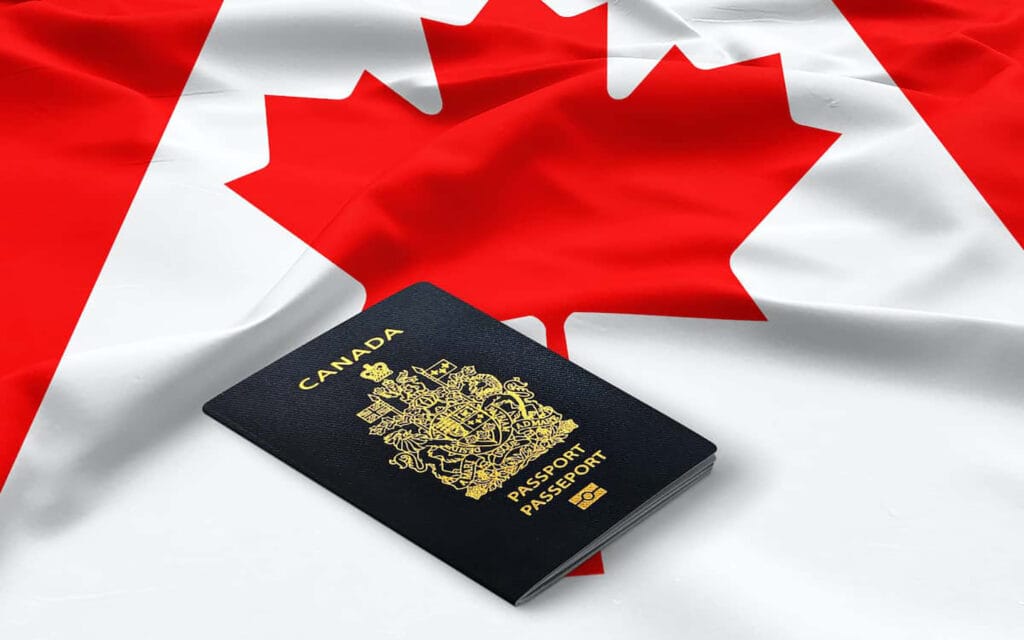Canada’s global competitiveness depends not only on attracting talent but also on managing immigration with precision and purpose. Administered by Immigration, Refugees and Citizenship Canada (IRCC), the International Mobility Program (IMP) serves as a dynamic policy tool that balances economic growth, cultural exchange, and international agreements.
From facilitating intra-company transfers and Canada work permits to supporting Francophone mobility, the IMP is designed to be flexible, efficient, and responsive to Canada’s evolving needs. This section explores how IRCC oversees the program, the roles of partner agencies, recent policy developments, and the challenges and innovations shaping the program’s future.
What Is the International Mobility Program (IMP)?
The International Mobility Program (IMP) allows Canadian employers to hire temporary foreign workers without requiring a Labour Market Impact Assessment (LMIA). By providing LMIA exemptions in specific circumstances, the IMP streamlines and speeds up the hiring process. Key categories under the program include:
- International Agreements: Work permits issued through trade or reciprocal agreements that encourage the movement of professionals across borders.
- Intra-Company Transfers: For employees relocating to a Canadian branch or affiliate of a multinational company.
- Open Work Permits: Permits that enable foreign nationals to work for any Canadian employer, subject to certain conditions.
- Francophone Mobility: Aimed at attracting French-speaking foreign workers to communities outside Quebec to support linguistic and cultural diversity.
The IMP’s Separation from the TFWP
In 2014, Canada formally separated the International Mobility Program (IMP) from the Temporary Foreign Worker Program (TFWP) to more effectively address distinct immigration and labor market objectives:
- The TFWP aims to fill short-term labor shortages. Employers must secure a Labour Market Impact Assessment (LMIA) to demonstrate that no Canadian is available for the job. This program is overseen by Employment and Social Development Canada (ESDC).
- Managed by Immigration, Refugees and Citizenship Canada (IRCC), the IMP allows LMIA-exempt work permits for foreign nationals whose presence supports Canada’s economic, cultural, or international interests, such as through trade agreements or reciprocal work programs.
This separation enables each program to function with clearer objectives and specialized oversight. While the TFWP addresses immediate labor needs, the IMP fosters broader policy goals like international cooperation and talent attraction.
How IRCC Manages the IMP
The International Mobility Program (IMP) is primarily managed by Immigration, Refugees and Citizenship Canada (IRCC), with support from Employment and Social Development Canada (ESDC) and the Canada Border Services Agency (CBSA). Each of these federal agencies plays a specific role in ensuring the program runs efficiently and aligns with Canada’s broader goals.
1. Organizations Related to IMP
- IRCC’s Role:
IRCC is the leading department responsible for designing, delivering, and overseeing the IMP. It evaluates work permit applications, develops program policies, and ensures the program supports Canada’s economic, cultural, and social objectives. Through the IMP, IRCC facilitates Labor Market Impact Assessment (LMIA)-exempt work permits in various streams.
- ESDC’s Involvement:
Although ESDC primarily manages the TFWP and LMIA process, it contributes to the IMP by supporting policy coordination, labor market analysis, and compliance monitoring in certain cases.
- CBSA’s Role:
CBSA enforces immigration regulations at the border and ensures that foreign workers entering under the IMP meet all entry and permit conditions. Officers at ports of entry may assess admissibility and confirm work permit details.
2. Policy Development and Updates
Immigration, Refugees and Citizenship Canada (IRCC) oversees the development and refinement of the International Mobility Program (IMP) to ensure it aligns with Canada’s economic, social, and cultural priorities:
- Strategic Alignment: The IMP’s Labour Market Impact Assessment (LMIA) exemptions are adjusted to support key government objectives, including attracting high-skilled talent, advancing international education, and easing transitions to permanent residency.
- Economic and Social Impact: The program enables Canadian employers to access a global workforce, supporting industries and enriching the country’s socio-cultural landscape.
- Monitoring Challenges: Despite its positive contributions, the IMP faces data gaps, especially related to open work permits, making it difficult to fully assess labour market outcomes or identify potential issues like wage suppression or job displacement.
- Compliance and Worker Protection: While many employers understand their obligations, some temporary workers remain unaware of their rights or fear reporting abuse. Compliance inspections can also be lengthy and resource-intensive.
- Program Delivery Issues: The program continues to face operational hurdles, including slow processing times, complex LMIA exemption rules, and ongoing technical issues with the Employer Portal.
3. Application Processing
IRCC aims to process certain LMIA-exempt work permit applications within two weeks under the Global Skills Strategy (GSS). To qualify, applicants must:
- Apply from outside Canada
- Have a job classified under TEER category 0 or 1 of the National Occupational Classification (NOC)
- Ensure the employer has submitted an offer of employment through the Employer Portal and paid the compliance fee
4. Compliance Enforcement
Immigration, Refugees and Citizenship Canada (IRCC) plays a crucial role in enforcing compliance within the International Mobility Program (IMP). To maintain the integrity of the program, IRCC has established a comprehensive compliance framework that employers must adhere to. Employers participating in the IMP are required to:
- Submit an offer of employment through the Employer Portal and pay the employer compliance fee of $230, unless exempted.
- Ensure the job details provided in the offer of employment, such as job title, duties, and wage, align with the National Occupational Classification (NOC) code.
- Comply with the conditions listed on the foreign worker’s work permit, including job location and duration.
- Provide employment terms that are equal to or more favorable than those outlined in the offer of employment.
- Maintain all records related to the employment of the temporary foreign worker for six years from the date the work permit is issued.
5. Resources and Support
Immigration, Refugees and Citizenship Canada (IRCC) administers the International Mobility Program (IMP) through the Employer Portal, a secure online platform designed for Canadian employers hiring temporary foreign workers exempt from the Labour Market Impact Assessment (LMIA) requirement.
Recent Developments in the IMP
Canada’s International Mobility Program (IMP) has seen important updates to better align with the country’s evolving immigration goals, labour market needs, and economic priorities. Here’s what’s new:
1. Revised Work Permit Targets
- Between January and October 2024, Canada issued 627,460 work permits under the IMP (including new permits and renewals).
- The 2025–2027 Immigration Levels Plan sets a goal of 285,750 new IMP entries in 2025, including 5,000 for crisis/humanitarian cases.
- These changes support Canada’s plan to reduce the share of temporary residents to 5% of the population by the end of 2026.
2. Tighter Rules for Spousal Open Work Permits
Effective September 18, 2024, eligibility is now limited to spouses of:
- International students in master’s programs (16+ months), PhDs, professional programs, or certain pilot initiatives.
- Temporary foreign workers in high-skilled occupations, critical sectors (e.g., healthcare, construction), or government-priority roles (e.g., military).
3. New Conditions for Business Owners
Entrepreneurs applying under the IMP must now:
- Prove adequate business funds.
- Hold at least 51% ownership of their company.
- Show potential for meaningful economic impact in Canada.
Note: Work permits under this stream are valid for up to 18 months.
4. End of Temporary Visitor-to-Worker Policy
- As of August 28, 2024, visitors can no longer apply for work permits from within Canada under the temporary public policy.
- This move supports efforts to manage the volume of temporary residents and uphold program integrity.
5. Launch of IMP+ (International Mobility Program Plus)
- The IMP+ stream allows individuals with a Certificat de sélection du Québec (CSQ) and a Quebec invitation letter to apply for an open work permit.
- In 2024, the program accepts up to 7,350 applications.
- Applicants must reside outside Quebec or Canada when applying.
The Economic and Cultural Contributions of the IMP
Canada’s International Mobility Program (IMP) plays a key role in supporting the country’s labor force and contributing to its cultural diversity. Below are some important insights into the program’s impact:
- Labour Market Participation
- In 2021, approximately 69% of IMP participants reported employment income, compared to 87% under the Temporary Foreign Worker Program (TFWP).
- Around 71% of IMP workers earned below the Canadian median income of $42,000, suggesting a significant share are employed in lower-wage sectors.
- Demographic Trends
From 2014 to 2022, 55% of IMP work permits were granted to men and 45% to women, reflecting a relatively balanced gender distribution.
- Economic Contributions
IMP participants, like other temporary foreign workers, make essential contributions in industries such as agriculture, food services, and manufacturing, sectors that depend heavily on international labor to meet workforce demands.
Challenges Facing the IMP
As Canada refines its immigration strategies, the International Mobility Program (IMP) is encountering several notable challenges in 2025 that impact both employers and foreign workers:
1. Processing Delays and Administrative Bottlenecks
Work permit applications under the IMP are facing significant delays, disrupting hiring timelines and complicating workforce planning for employers.
2. Growing Complexity of LMIA Exemptions
The continuous expansion and increasing complexity of LMIA exemption categories have led to confusion among employers and difficulties for IRCC officers when assessing eligibility.
3. Technical Issues with the Employer Portal
Frequent technical problems within the Employer Portal, used to submit job offers, are slowing down the process and causing frustration among employers.
4. Tighter Rules for Open Work Permits
Open work permits are now available only under specific LMIA exemptions, making it harder for foreign nationals to qualify and limiting options for employers seeking flexibility.
5. Increased Compliance Burdens for Employers
Employers face stricter compliance requirements once a foreign worker arrives. Non-compliance may lead to penalties, adding pressure and administrative responsibility to hiring organizations.
6. Shifting Public Sentiment and Policy Changes
A growing perception that immigration strains public resources has led to policy tightening, reduced immigration targets, and greater scrutiny of temporary worker programs like the IMP.
Technological Advancements in IRCC’s Administration
Immigration, Refugees and Citizenship Canada (IRCC) has integrated advanced technology to improve the efficiency, speed, and integrity of its immigration processes. Through tools like advanced analytics and automation, IRCC can streamline the processing of routine applications, allowing officers to focus on complex cases.
Key developments include:
- Advanced Analytics to quickly handle straightforward applications, such as Temporary Resident Visas, with final decisions still made by humans.
- Chinook, a tool that helps officers view applicant data more easily and make informed decisions.
- Ethical Use of Technology, ensuring all automated systems are transparent, regularly reviewed, and aligned with Canada’s official guidelines.
- Program Integrity Tools that use data analysis to detect potential fraud or security concerns, protecting the integrity of the immigration system.
A Look Ahead
As Canada adjusts its immigration strategy in response to shifting economic conditions, public sentiment, and policy goals, the International Mobility Program (IMP) is poised for further transformation. Looking forward, the IMP will continue to evolve in alignment with Canada’s priorities. A more data-informed, strategically targeted, and technologically advanced program is expected, one that balances flexibility for employers with stronger oversight, fairness, and national interest.
Take the Next Step
As Canada continues to evolve its immigration policies to meet the demands of a dynamic global economy, the International Mobility Program (IMP) remains a vital pathway for employers and foreign workers. Under the careful administration of Immigration, Refugees and Citizenship Canada (IRCC), in collaboration with ESDC and CBSA, the program enables businesses to access international expertise quickly and efficiently while advancing Canada’s social, cultural, and economic objectives.
If you want to get Canada permanent residency under the the International Mobility Program, take the first step today to find your eligibility through a free CanadaPass assessment form. Our experts provide specific and useful services and consultations to help you achieve a successful immigration journey to Canada.










